Unesco to review four UAE sites for World Heritage List
[ad_1]
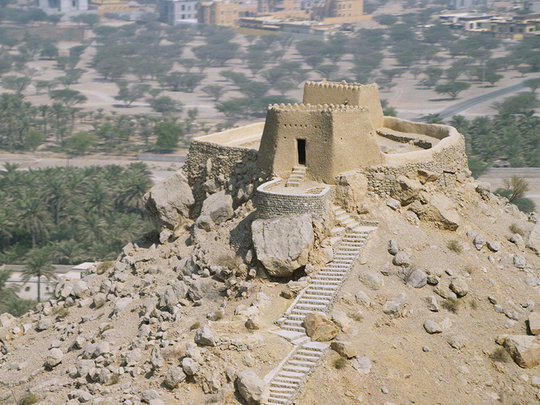
Image Credit: Courtesy: RAK Tourism Development Authority
Dubai: The UAE has added four new sites to Unesco’s tentative list of global heritage sites, bringing the total number of areas under review to 12.
The heritage sites are all located in Ras Al Khaimah and include Julfar City, the Pearl Trade City on the Red Island, Al Shamal and Al Dhayah.
In a statement, Noura Al Kaabi, Minister of Culture and Youth, and Chairperson of the National Education, Culture and Science Committee, said: “I am delighted that these four important sites from Ras Al Khaimah have now been formally added to the UAE’s tentative list of Unesco World Heritage Sites. Together, they represent around 5,000 years of our history, with a particular emphasis on our maritime traditions. Julfar was a key port-city for international trade for centuries. Jazirat al-Hamra is the best-preserved pearling town in the Gulf.
“The sites at Dhayah and Shimal offer a record of our distant past as well as our more recent history. Eight sites from other Emirates are already on the Unesco Tentative World Heritage Site listing, while Al Ain has already been formally inscribed on the list. The Ministry of Culture and Youth will continue to work with the relevant local departments to complete the process of UNESCO listing. This helps to gain international recognition for our heritage.”
The other heritage sites currently under review include Al Bidya Mosque in Fujairah, the settlement and cemetery of Umm an-Nar Island in Abu Dhabi and Dubai Creek.
The new sites will strengthen the UAE’s global presence on the cultural tourism map, she added, noting that it has a clear joint agenda with Unesco to preserve and ensure the sustainability of cultural heritage and make it an efficient tool in economic development.
Julfar City
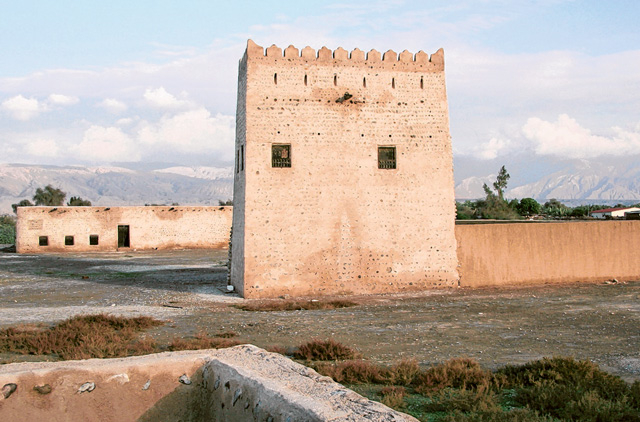
– it used to be known as Julfar over the ages.
Image Credit: Gulf News Archive
Julfar City, part of the Musandam Peninsula and close to the Hormuz Strait, is located on a sedimentary plain separated by limestone quarries from the Gulf coast. Due to its geographical location in a drifting area between Wadi Beeh and Wadi Haqil, it has access to rainwater and sediment pools from the steep mountains, meaning that it has fertile soil suitable for agriculture.
Due to the frequent natural changes to Julfar’s environment and the use of land, many key heritage sites have been closely linked to Julfar City. The three sites in Kush, Al Mataf and Al Nodoud, Ras Al Khaimah, were identified as Julfar ports and commercial centres during various periods of the Islamic era. The city had a massive wall, which was part of an impressive fortification system securing its ports and palm trees gardens.
The Pearl Trade City on the Red Island
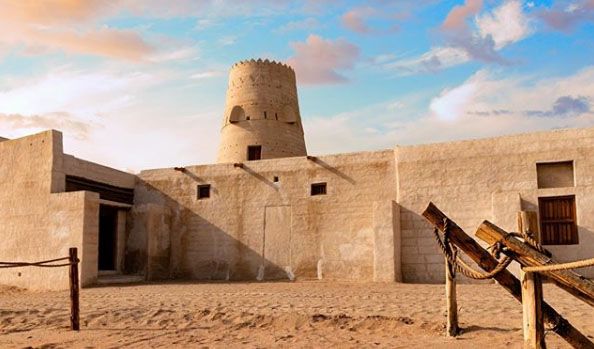
Image Credit: RAK Tourism Development Authority
The original 45-hectare island was located along the Gulf close on the southern coast of Ras Al Khaimah. Its eastern and southern parts were connected to the mainland and constantly accessible. To the east, the island overlooks the desert and currently, two surveillance towers protect it. The towers also secured drinkable water wells, and water was previously brought to the island by donkeys. The city’s maritime environment provided marginally-salty water for household use only. The small alleys on the Red Island contain houses with yards, markets, mosques and a fort, along with surveillance towers.
Al Shamal
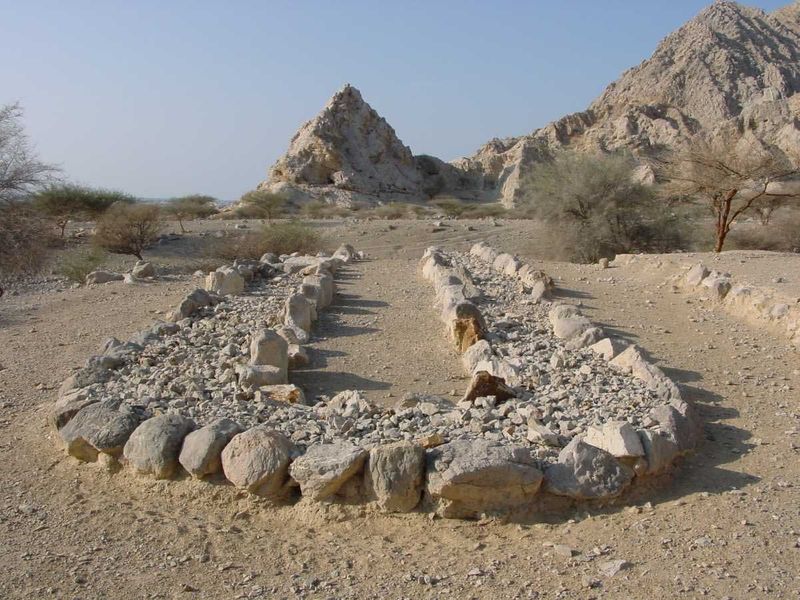
Al Shamal is a rich heritage site stretching from Ras Al Jabal for over three kilometres. The area is characterised by gravel plains and Acacia forests overlooking limestone quarries in Ras Al Khaimah. To the west, Al Shamal overlooks vast palm tree gardens on the fertile plains of Wadi Beeh and Wadi Hail.
The cultural site has many settlements and over 100 cemeteries dating back to prehistory, as well as a palace dating back from 1600 to 2000 BC, and other sites dating back to the Late Bronze Age (1600 to 1300 BC) and the Middle Islamic Era (13th to 16th century AD). The Al Shamal area has contributed to the unique cultural traditions that evolved on the crossroads of the ancient trade routes along the Gulf, the Indian Ocean and the south-eastern part of the Arabian Peninsula.
Al Dhayah’s Cultural Scene
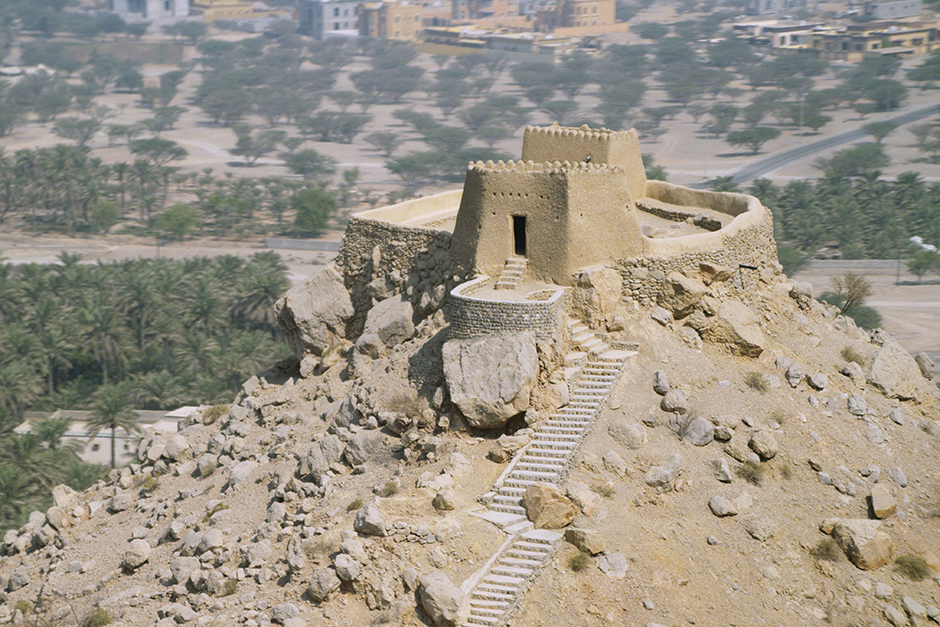
Image Credit: RAK Tourism Development Authority
Al Dhayah is one of Ras Al Khaimah’s most impressive and important sites in terms of geographic location and culture. The area is surrounded by steep mountains rising to 850 metres from three directions and overlooking a lake to the west. The Gulf of Al Dhayah has hosted stable communities for thousands of years, and its gravel plains shaped like a crescent has witnessed agriculture activities towards the coast.
The area has various natural landscapes, heritage sites and historic locations, which include a lake, palm trees gardens, and Al Dhayah Fort.
[ad_2]
Source link
